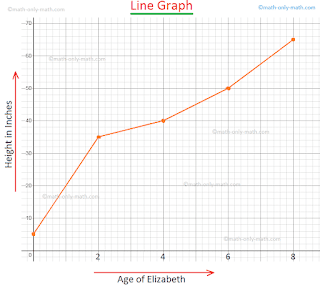Unveiling the Beauty of Mathematics: Exploring Place Value, Functions, and the Chi-Square Distribution Table
Mathematics, often regarded as the language of the universe, encompasses a myriad of concepts that are not only fascinating but also integral to our understanding of the world. In this exploration, we will delve into the intricacies of teaching mathematics, focusing on the significance of place value words, the representation of functions through graphs, and the practical utility of the chi-square distribution table.
Teaching Mathematics
Using Place Value Words:
Understanding the Foundation: Place value is a fundamental concept in mathematics, forming the basis for numerical representation. Teaching mathematics using place value words involves breaking down numbers into units, tens, hundreds, and beyond. This approach enhances students' comprehension of the structure of numbers, laying a solid foundation for more advanced mathematical concepts.
Concrete to Abstract: Utilizing place value words allows for a seamless transition from concrete to abstract understanding. For example, instead of merely memorizing the digits in a number, students can grasp the concept by associating each digit with its specific place value. This approach fosters a deeper understanding of numerical relationships and aids in problem-solving.
Enhancing Mathematical Fluency: Proficiency in place value is crucial for mathematical fluency. By emphasizing the significance of place value words, educators can instill a sense of confidence and accuracy in students' mathematical computations. This fluency becomes particularly essential as students advance to more complex mathematical operations and problem-solving scenarios.
Real-World Applications: Place value extends beyond the classroom into real-world applications. Whether dealing with financial transactions, scientific measurements, or data analysis, a solid grasp of place value is indispensable. Educators can bridge the gap between theoretical concepts and practical applications by incorporating real-world examples into their teaching methodologies.
Representing
Functions through Graphs:
Visualizing Mathematical Relationships: Graphs that represent functions serve as powerful tools for visualizing mathematical relationships, particularly those involving functions. A function, which describes the relationship between inputs and outputs, can be graphically represented to provide a clear visual understanding. This visual representation enhances students' ability to interpret and analyze mathematical relationships.
Cartesian coordinate system: The Cartesian coordinate system is a foundational framework for graphing functions. The x-axis represents the input variable, while the y-axis represents the output variable. As values of the input variable change, corresponding points on the graph reveal the function's behavior, whether it be linear, quadratic, exponential, or logarithmic.
Types of Functions and Graphs: Different types of functions exhibit distinct graphical patterns. Linear functions produce straight-line graphs, quadratic functions result in parabolic curves, exponential functions lead to exponential growth or decay, and logarithmic functions manifest as curved graphs. Introducing students to these graphical representations deepens their understanding of mathematical functions.
Analyzing Trends and Patterns: Graphs allow students to analyze trends and patterns within mathematical data. By observing the slope, intercepts, and overall shape of a graph, students can draw conclusions about the behavior of functions. This analytical skill is crucial not only in mathematics but also in fields such as science, economics, and engineering.
The Table of
Chi-Square Distribution:
Introduction to Chi-Square Distribution: The chi-square distribution is a probability distribution that plays a significant role in statistical analysis, particularly in hypothesis testing and goodness-of-fit tests. The chi-square distribution table provides critical values for different levels of significance, aiding statisticians in making informed decisions based on observed data.
Degrees of Freedom: The chi-square distribution is characterized by degrees of freedom, which depend on the specific statistical test being conducted. The degrees of freedom influence the shape of the chi-square distribution curve and determine the critical values in the chi-square distribution table. Understanding this relationship is essential for accurate statistical analysis.
Application in Hypothesis Testing: The table of chi square distribution table is commonly used in hypothesis testing to assess the independence of categorical variables. By comparing the calculated chi-square test statistic to the critical values in the distribution table, statisticians can determine whether observed data deviate significantly from expected values, providing insights into the relationships between variables.
Goodness-of-Fit Tests: Goodness-of-fit tests assess the adequacy of a statistical model in describing observed data. The chi-square distribution table assists in these tests by providing critical values for the chi-square statistic. Researchers can evaluate whether the observed frequencies match the expected frequencies predicted by the model, contributing to the validity of statistical analyses.
.jpg)



Comments
Post a Comment